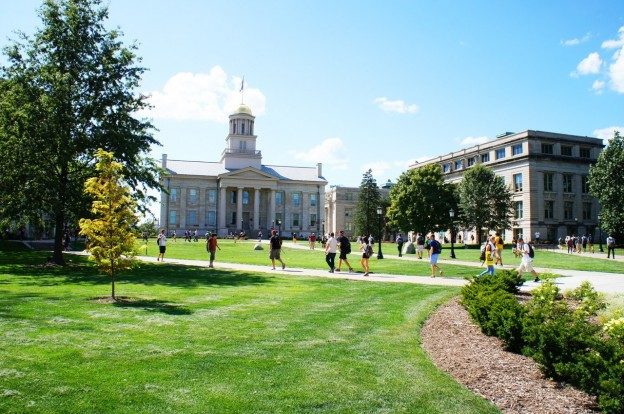By Zach Weigel
A rough draft created by University of Iowa officials detailing the university’s strategic plan for the 2016-21 academic years was submitted by the Strategic Plan Development Group on July 5 following months of discussion.
Co-chairwoman Sarah Hansen, a UI assistant vice president for Student Life, said the process of creating the plan started under former UI President Sally Mason but was put on hold until a new president was appointed.
Since this past spring, when development of the plan resumed, Hansen said, the committee has “digested a whole bunch of data,” including reports, metrics, prior plans, and recommendations.
Hansen said the group has also presented the plan to governance bodies and colleges within the university to receive their input.
“The committee set out to develop strategies, critical tasks, and criteria for measurement to fit our three goals,” she said.
Those three goals are student success, research and discovery, and engagement.
According to the draft, as part of the student-success goal, the plan states the UI will “provide a transformative educational experience” and “prepare students for success in a global, multicultural world.”
For research and discovery, the goal is to “perform high-impact research” as the university strives to regain its top-20 Public Research University status.
As for engagement, the plan lays a foundation to “broaden educational resources” by facilitating partnerships with other entities in other areas.
“We’re proud of where our conversations have led us, [and] the draft reflects what we think the university needs to address,” Hansen said.
A subcommittee was devised for each goal, she said, but that the process could still prove arduous at times.
“The toughest part was [narrowing] everything down to make it practical,” Hansen said. “At only three pages in length, this strategic plan differs from past plans, which made the process of paring down really hard.”
The draft is a “living document,” and officials want to receive feedback, she said.
From this point, the plan will be subjected to four forums for discussion.
“The [group] will continue to revise the plan in light of the additional feedback that we receive this fall,” said Associate Professor David Cunning, co-chairman of the Strategic Plan Development Group. “There is a strategy-implementation team, and there will be expert subcommittees of students, staff, and faculty that will help to implement the plan so that it is maximally responsive to the university’s needs and interests over the five year period.”
Associate Vice President for Research Cheryl Reardon, a member of the Strategic Plan Development Group said that because the strategic plan is not in its final stages yet, there is room for changes after more receiving input from the campus community.
“The document is in draft form to allow for additional campus input as we shape the final document,” she said.
Reardon said the development stage has been an inclusive process “with several opportunities for the campus community to weigh in on institutional priorities.”
After the draft is formally submitted on Oct. 1, the strategy implementation team will review the plan annually to accommodate for adjustments and amendments.



